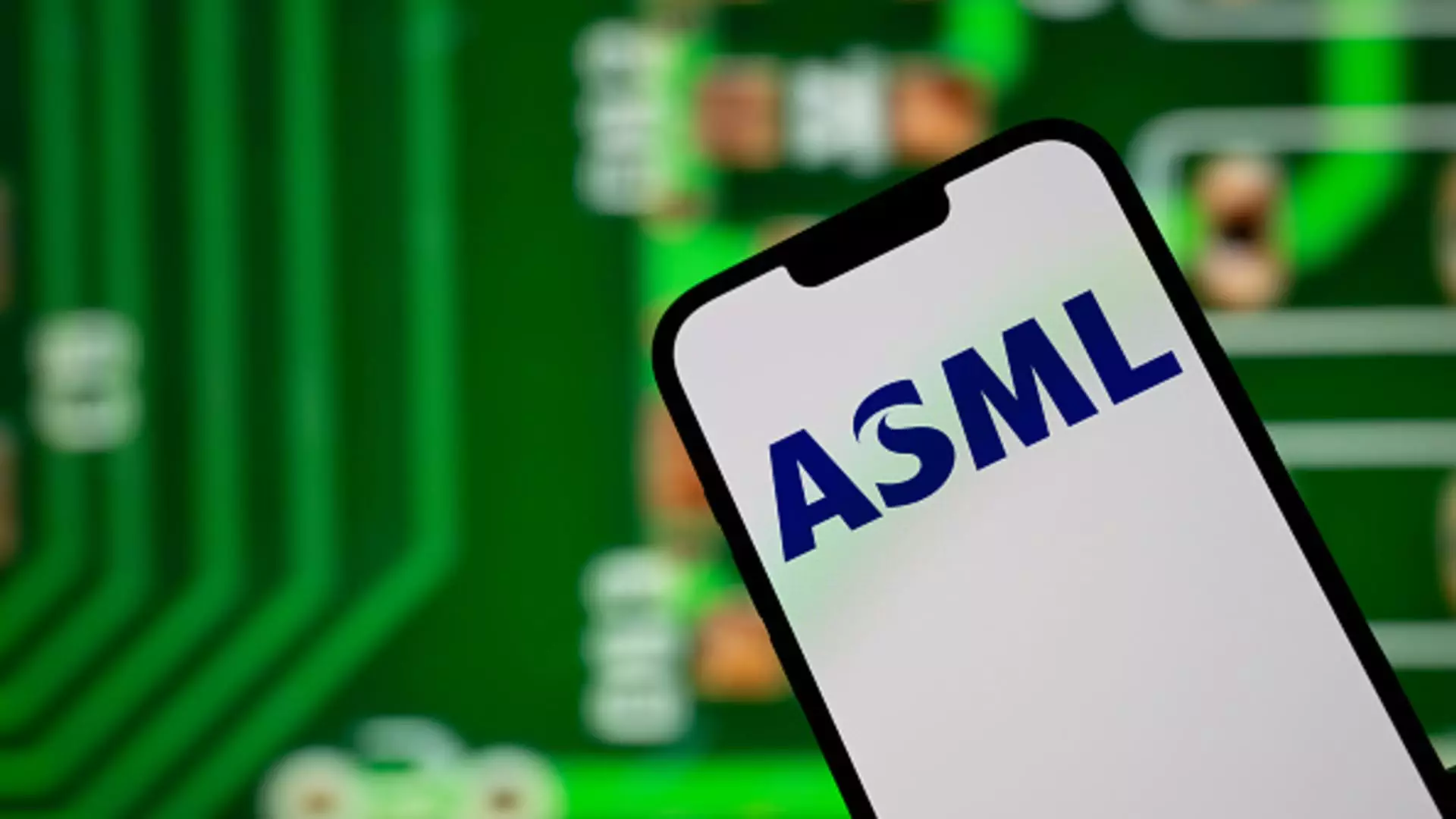In an era where technological advancements drive global economies, the semiconductor industry finds itself at a precarious crossroads. The giant ASML has recently revealed its latest financial figures, which indicate a notable downturn in order expectations. Although the company reported net sales of €7.74 billion, falling short of the anticipated €7.8 billion, that’s merely the tip of the iceberg. CEO Christophe Fouquet’s admission that trade restrictions from the U.S. could create “new uncertainty” for both the company and its customers should send alarm bells ringing across the industry. With an estimated market demand being at stake, ASML is caught in a vortex of potential decline, and the ramifications could be catastrophic.
ASML’s net bookings, a vital indicator of future business health, amounted to €3.94 billion—significantly below the expected €4.89 billion. This discrepancy not only reflects a weakening in demand but also hints at broader economic uncertainties. Fears around ongoing geopolitical tensions and trade tariffs are clouding the industry’s outlook, potentially stifling innovation and growth. When a company like ASML, which plays a pivotal role in the semiconductor supply chain, issues such warnings, it raises questions about the viability of other tech firms reliant on its equipment.
The Role of Artificial Intelligence in Demand Dynamics
While ASML’s CEO insists that demand remains “strong,” primarily fueled by the momentum of artificial intelligence, this assertion feels somewhat hollow in light of recent data. How can a company proclaim strength in demand when concrete numbers tell a different story? The contradiction between public optimistic rhetoric and financial reality is striking. For the semiconductor industry, AI may indeed be a necessary driver, but it should not mask the vulnerabilities that exist due to geopolitical skirmishes and potential tariffs imposed by the U.S. government.
The situation is further compounded by the complexities of international trade-related policies. For instance, the recent announcements regarding tariff exemptions for smartphones and computers added layers of confusion that could disrupt supply chains significantly. ASML’s position reflects a broader dilemma; trying to brace for a storm while simultaneously maintaining the key relationships with customers, like TSMC, which are already feeling the pinch of uncertainty.
A $5.5 Billion Warning from Industry Peers
In a related development, Nvidia disclosed that it anticipates a staggering $5.5 billion quarterly charge due to U.S. restrictions on exports to several regions, including China. This number looms large, making even ASML’s potential drop in orders seem slightly more manageable by comparison. However, this sentiment is short-lived; it highlights a disquieting trend within the semiconductor industry where businesses are compelled to pivot rapidly or risk significant financial fallout. The interdependencies within the tech ecosystem cannot be ignored; what affects one player can pose a threat to the entire operational orchestra.
The U.S. government’s scrutiny over semiconductor technology reflects broader national security concerns but raises legitimate worries about innovation stagnation. When corporations like Nvidia and ASML, both critical to advancing technology, hint at the limits of their operational framework due to government interference, we must question whether these interventions harm the very industries they are supposed to protect.
A Call for Balanced Policies and Rational Oversight
In the pursuit of maintaining national security and fostering economic resilience, policymakers must tread cautiously. Blanket tariffs could very well choke the lifeblood of industries that rely on cross-border trade. ASML’s revenue projections for 2025 currently rest between €30 billion to €35 billion, which now feels more like chasing a mirage than a secure forecast.
Certainly, tariffs can serve a purpose; however, they must be wielded thoughtfully, grounded in the reality that technological innovation thrives most in collaborative environments. If trade restrictions cause a spiral of stagnation within the semiconductor industry, the United States may find itself facing not only a diminished technological edge but also lost market leadership in a global landscape increasingly driven by artificial intelligence and cutting-edge systems.
Reflecting on the current market dynamics reveals an urgent need for dialogue between corporations and regulators, emphasizing that clear, fair, and forward-looking policies are paramount. Without them, we risk falling behind in an arena where adaptability and innovation are more crucial than ever. The clock is ticking, and the future of the semiconductor industry hangs in the balance.

